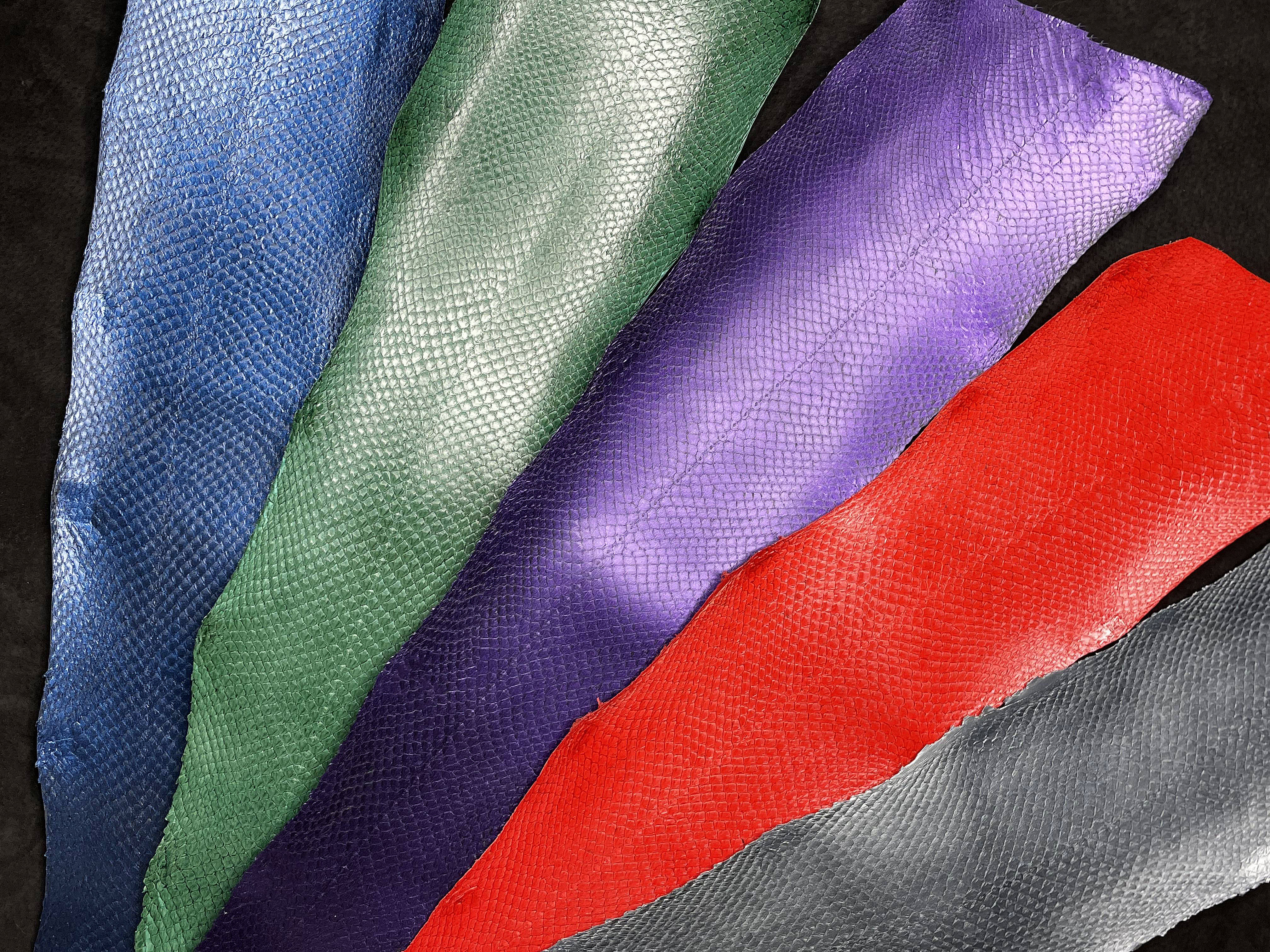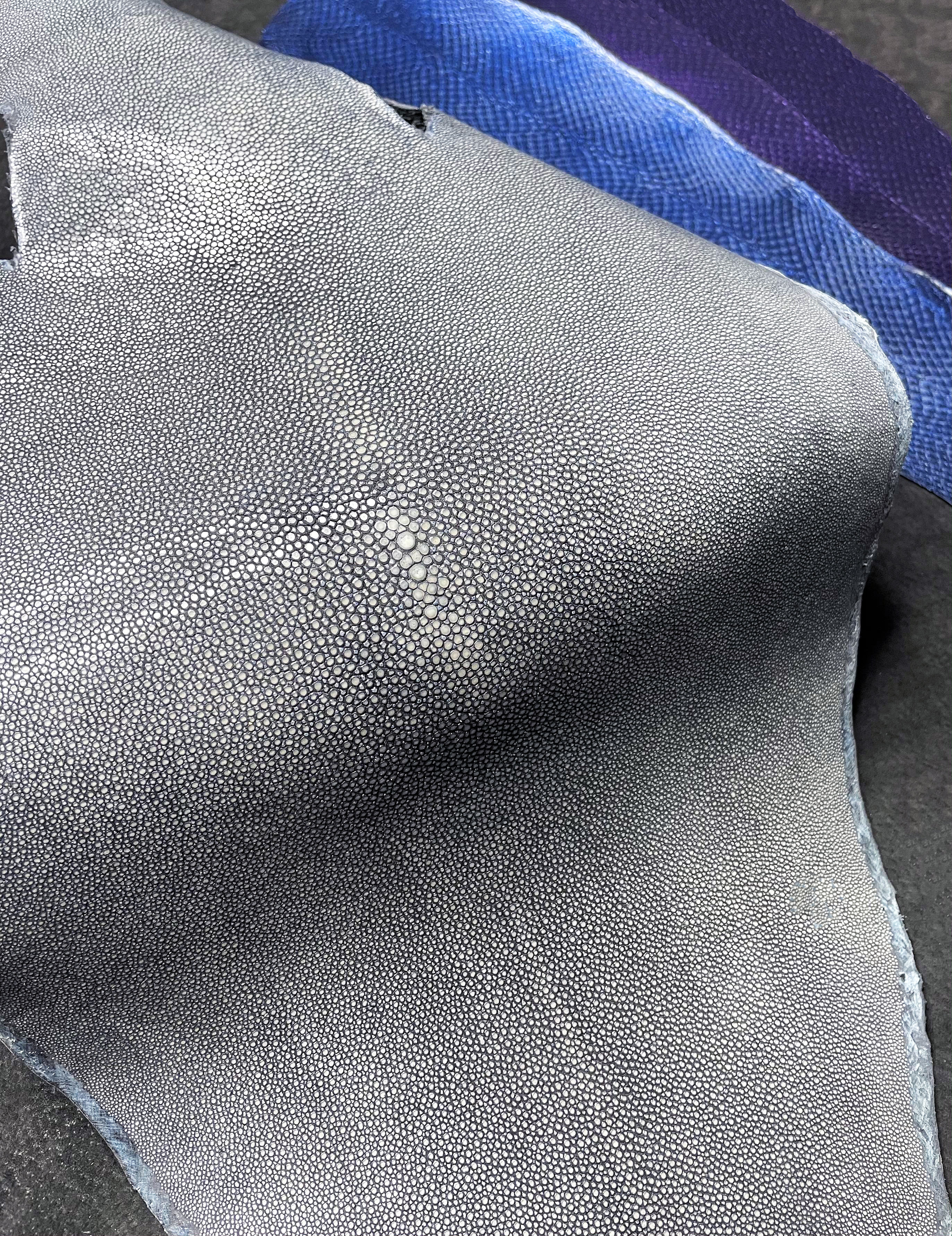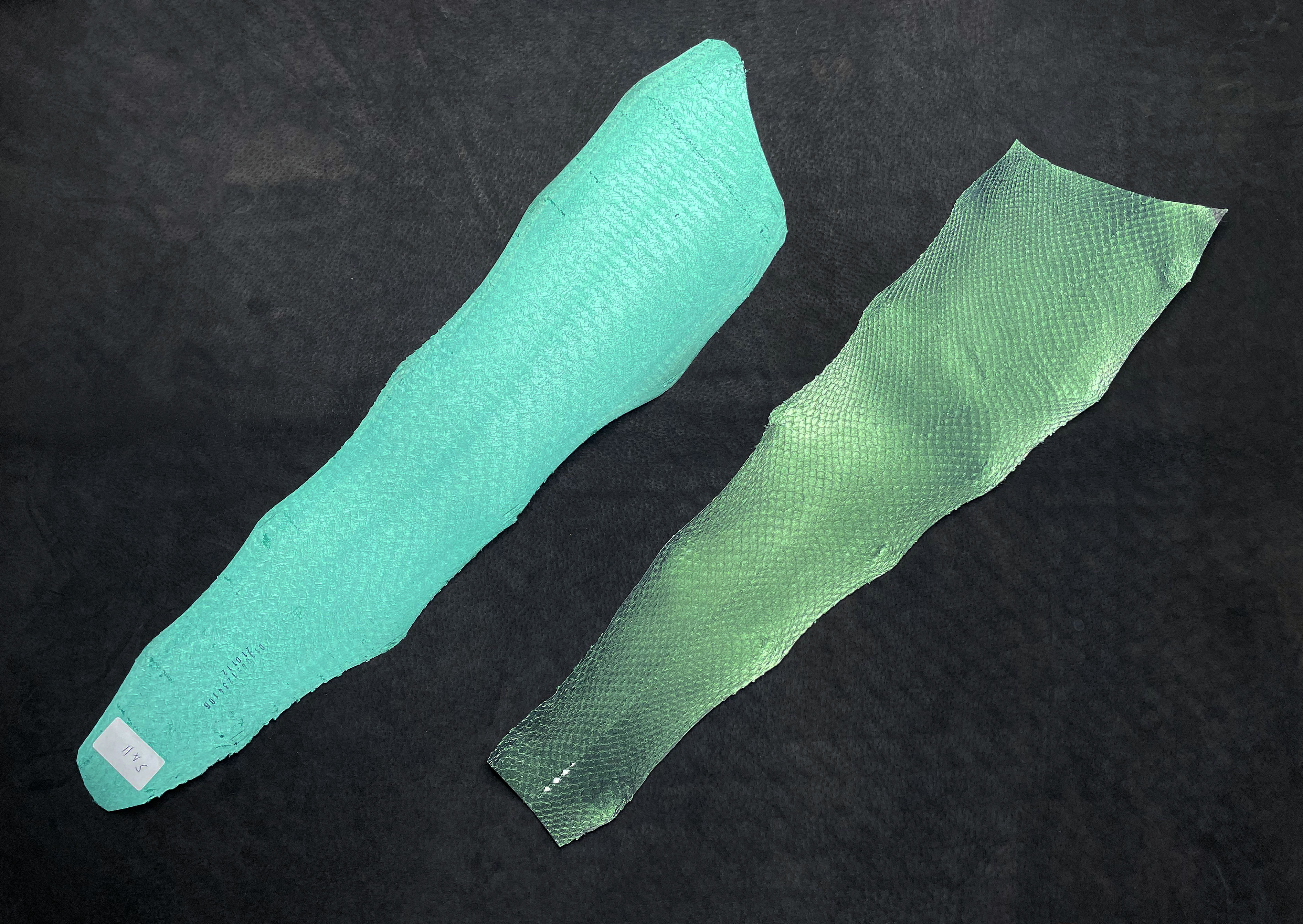Where does salmon leather come from? How is it made?

Salmon leather, available on our website, is a waste of the food industry. Recovered from restaurants, our salmon skins are treated and transformed into leather in a natural way in a French tannery.
Before being plunged into a tank, the scales are removed, as is the remaining flesh. Once thoroughly cleaned and ready to receive natural tannins, the skins are mixed for several hours.
By following the movements of the rotations, the pieces of bark, as well as the coffee seeds, come to soften the skins of fish. Thereafter, the skin that has become stain (white natural leather) can now be dyed. The process between receiving the raw skin and obtaining a usable leather lasts about two weeks.
What fish can become leather?

Dozens of different fish skins can be used to make leather. Nevertheless, the skins most often exploited remain those of: salmon, trout, perch, skate (galuchat) or sturgeon.
Over time, luxury manufacturers are turning more and more to this modern leather, which is part of the current ecological approach. The latter is increasingly considered at its fair value, and comes to establish itself in the world of leather in a safe and durable way.
Fish leather has always been considered “alternative leather”. However, the leathers of the sea have remarkable qualities, which only they possess...
The advantages of marine leather :
Unlike cowhide, sheep or lamb leather, fish leather has very interesting superior features. These are reflected in particular through the resistance of his skin. In fact, marine leathers have interwoven fibers, very resistant and durable. The risk of tearing the material is therefore much less.
In a second time, vegetable tanning offers this leather bright colors that will tend to skate over time, until tending towards warmer shades once exposed to the sun. It is this natural change that constitutes all the charm of this product.
As for sewing, these very thin skins, are very simple to bind or pierce. Thanks to our stitching awls and our saddle needles, you can model the skins using your usual techniques. In addition, nylon or polyester yarns are ideal for bonding parts together.
The peculiarities of salmon:

The salmon leather we offer has an exceptional finesse (between 0.4mm and 0.8mm). Its regular and symmetrical grain makes it possible to embellish articles intended to be worn every day, such as watches or jewelry for example.
Renowned for being very versatile, salmon leather has the particularity of easily receiving the tint that is applied to it. As a result, the finished product displays unique colours and reflects subtle finishes (matte, satin or metallic).
Our eco-responsible approach:
This Nordic fish known for its exquisite taste and its many variations of recipes, remains the most consumed and therefore wasted fish in the world. The objective for us is to continue to be part of our eco-responsible approach, which comes in response to our initiatives already established around up-cycling.
By offering this revalorized leather, from a French tannery, it allows us to fight against waste while supporting the made in France. In addition, these salmon leathers replenished in a continuous way, will allow you to create real collections of jewelry, accessories, sheath or small leather goods.
We invite you to read our other articles on our BLOG.
You will find tips, tricks and technical elements that will allow you to become a real expert in the subject.

